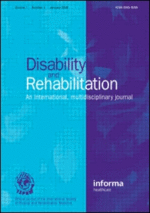
Foot & Ankle
Joint mobilization versus sham and control for chronic ankle instability
Disabil Rehabil. 2015;37(7):601-10. doi: 10.3109/09638288.2014.93587790 patients with chronic ankle instability were randomized to either 3 weeks of joint mobilization treatment, 3 weeks of sham mobilization treatment, or no intervention. Patients were assessed following the completion of one session, at the completion of the 3-week treatment phases, and at 6-month follow-up after the completion of treatment for range of motion in dorsiflexion, the Cumberland Ankle Instability Tool, and the Star Excursion Balance Test in the anterior, posteromedial, and posterolateral directions. Results significantly favoured the mobilization group compared to both sham and control groups after 3 weeks and at 6-month follow-up outcome for all measures. Additional, range of motion in dorsiflexion and the SEBT-anterior test significantly favoured the mobilization group compared to both sham and control groups following one session.
Unlock the full article
Get unlimited access to OrthoEvidence with a free trial
Start TrialCritical appraisals of the latest, high-impact randomized controlled trials and systematic reviews in orthopaedics
Access to OrthoEvidence podcast content, including collaborations with the Journal of Bone and Joint Surgery, interviews with internationally recognized surgeons, and roundtable discussions on orthopaedic news and topics
Subscription to The Pulse, a twice-weekly evidence-based newsletter designed to help you make better clinical decisions
Exclusive access to original content articles, including in-house systematic reviews, and articles on health research methods and hot orthopaedic topics
Or continue reading this full article
Register Now

Subscribe to "The Pulse"
Evidence-Based Orthopaedics direct to your inbox.




































